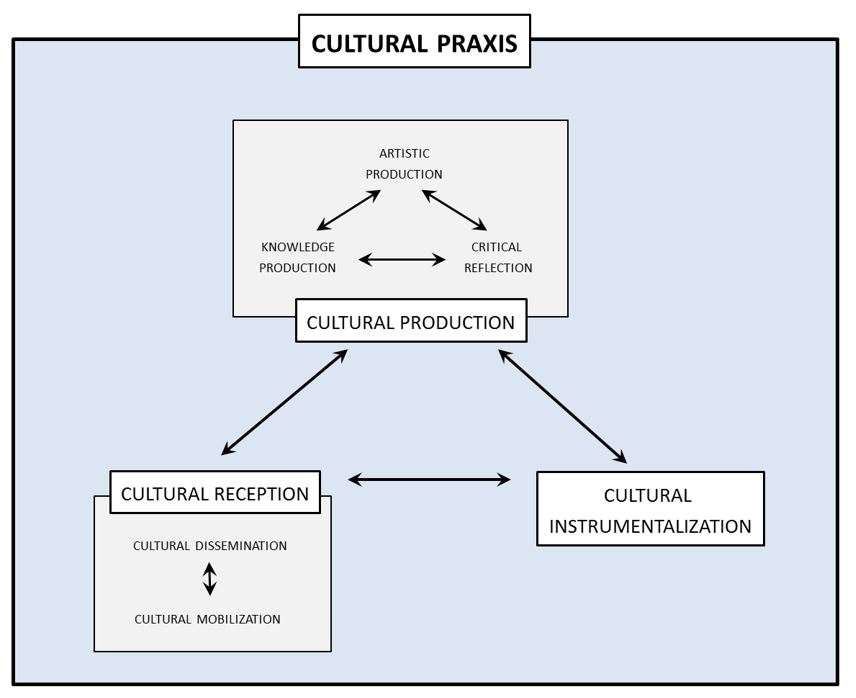What, precisely, did the activities involve which we now consider typical of the rise of national thought and interest? "Cultural nationalism" comprises a number of activities and initiatives, in a variety of cultural and social fields, and ranges from the revival of traditional sports to language purism, from the editing of medieval texts to the commemorative celebration of national hero-figures and wreath-laying at national monuments.
The list below gives an idea of the variety and diversity of manifestations of cultural nationalism, encompassing both artistic production and knowledge production – these being the most prominent forms of cultural production.
These practices took place in the enabling climate of modernity which provided a top-down ambience here called "Institutional", organized by authorities (state, municipal, ecclesiastical or otherwise), and a bottom-up, self-organizing ambience of sociability and associational life. They are given the rubric indices I and S, respectively:
- "I" Institutional infrastructure: -- the foundation of libraries, archives, museums, universities or university chairs, certain government agencies like academies, folklore surveys, archeological committees etc.;
"S" Social ambience: -- the foundation of associations (learned, cultural or otherwise), city academies, and publishing ventures such as periodicals, book clubs and reading societies.
Within that societal framework, the cultural practices itemized below covered the fields of language as a communicative medium; texts and discourse as a communicative platform; material culture (artefacts) and immaterial, performative culture. These cultural fields could be made the object of national cultivation processes in various degrees of outreach intensity: from [1] passive-receptive inventorization to [2] innovative productive practices to [3] their usage in actual political proclamations, propaganda and mobilization. Thus:
- "L1" Language retrieval and inventorization: -- the compilation of dictionaries and grammars;
"L2" Language cultivation and activism: -- debates and initiatives in the fields of orthography, standard and dialect forms, and language purism;
"L3" Language propagation and assertion in the public sphere : -- activism, planning, education;
"D1" Discursive/literary retrieval and inventorization: -- editions of olderliterary, legal and historical texts and documents;
"D2" Discursive/literary cultivation and activism : -- translation of the Bible and of world classics into the vernacular; national history-writing; national/historical dramas, poems and novels;
"D3" Discursive/literary propagation and assertion in the public sphere: -- history education, historical pageants, commemorations;
"A1" Artefacts retrieved and inventorizated: -- classing of monumental and archeological remains, and of symbolically or historically invested sites;
"A2" Artefacts cultivated or perpetuated: -- monument protection ("Denkmalschutz"), restoration, public collections in museums;
"A3" Artefacts inspiring propagation of identity in the public sphere: -- erection of monuments, dedications/naming of public space; historicist architecture; traditionalist or historicist decorative arts/design;
"P1" Performances retrieved and inventorized: -- collections/editions of oral literature, of proverbs, superstitions; folklore studies of manners and customs, pastimes; folk dances; folk music;
"P2" Performances cultivated and perpetuated: -- literature written in rustic-demotic mode; revivals of traditional sports/pastimes; composition of national music;
"P3" Performances propagated in the public sphere: -- revived and invented traditions, cultural, folkloristic and sporting events/festivals.
Mapping the cultural media (Language, Discourse, Artefact, Performance) against degrees of outreach (1, 2, 3) renders a matrix.